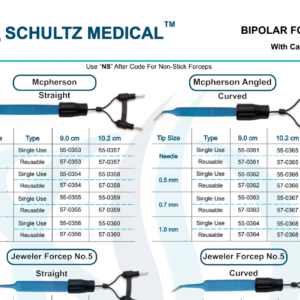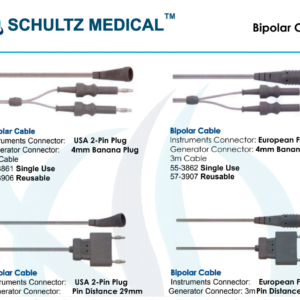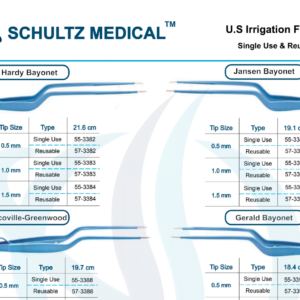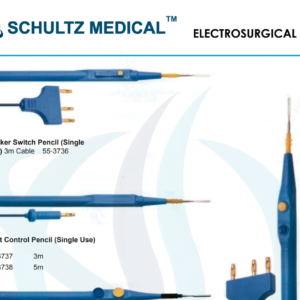- Home
- All Products
- Electrosurgical Instruments
- Diathermy Instruments
Diathermy Instruments
Diathermy Instruments
 Download/View Diathermy Instruments PDF
Download/View Diathermy Instruments PDF
Diathermy instruments are electrosurgical devices used to generate high-frequency electrical current to cut or coagulate tissues during surgical procedures. These instruments operate on the principle of resistance heating, where electrical current passes through the tissues, generating heat and causing them to cut or coagulate.
There are two types of diathermy instruments: monopolar and bipolar. Monopolar diathermy instruments consist of an active electrode, which is placed on the tissue being treated, and a return electrode, which is placed on another part of the body to complete the circuit. Bipolar diathermy instruments, on the other hand, have two electrodes built into the instrument and are used to coagulate tissues without the need for a return electrode.
Some common types of diathermy instruments include:
- Electrosurgical pencils: Electrosurgical pencils are hand-held devices used to deliver high-frequency electrical current to tissues during surgery. They allow the surgeon to control the intensity and duration of the electrical current, depending on the type of tissue being treated.
- Electrocautery probes: Electrocautery probes are long, thin instruments used to coagulate tissues in hard-to-reach areas. They are often used in neurosurgery and other delicate surgical procedures.
- Electrodes: Electrodes are specialized tips used to deliver the electrical current to the tissue. They come in a variety of shapes and sizes and are used for different types of surgical procedures.
- Bipolar forceps: Bipolar forceps are used to coagulate tissues without the need for a grounding pad. They consist of two metal tips that deliver electrical current to the tissue, effectively sealing blood vessels and reducing bleeding.
Proper training and experience are necessary to use diathermy instruments safely and effectively. Healthcare professionals must be familiar with the different types of instruments, their features and capabilities, and the potential risks and complications associated with their use.







